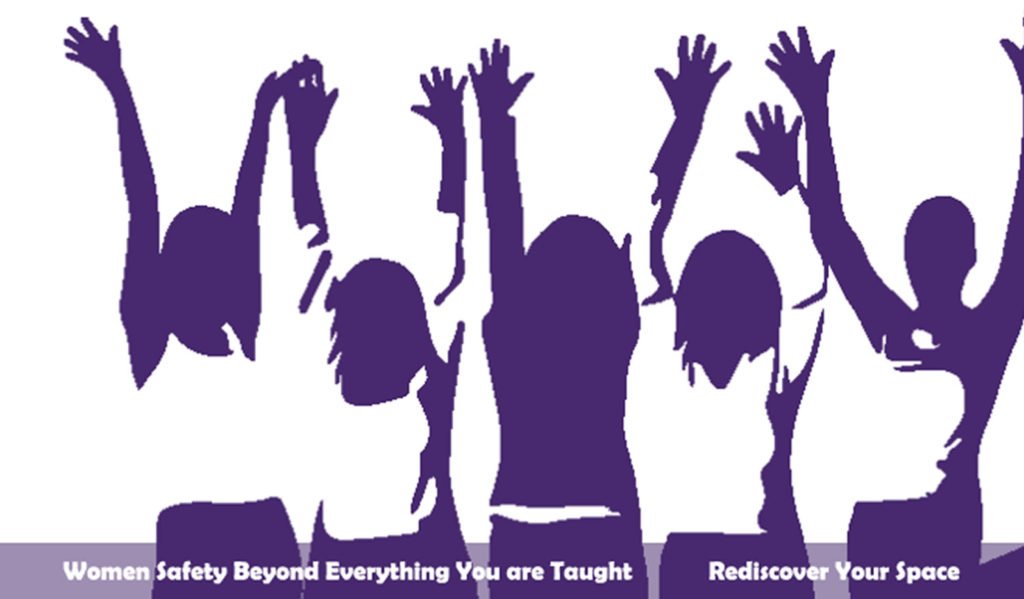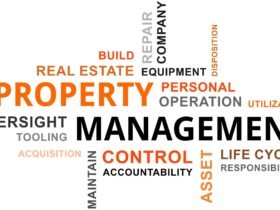Leadership is a crucial element that defines the direction of individuals, teams, and organizations. In a world where change is constant, effective leadership goes beyond simply managing people or processes—it’s about inspiring others, fostering innovation, and shaping both the present and the future. From businesses to communities, strong leadership serves as the backbone of growth, stability, and transformation. Let’s explore the essence of leadership, its key qualities, and how it influences the present and future.
The Core of Leadership: What It Truly Means
Leadership is often perceived as a role held by those in senior positions, but its essence goes deeper than titles and positions of authority. True leadership is the ability to guide, inspire, and influence others to achieve a common goal. It’s about creating a vision, rallying people around that vision, and driving them to take action.
At its core, leadership requires:
- Emotional Intelligence: The ability to understand and manage one’s emotions, as well as the emotions of others.
- Vision: Seeing beyond the present and crafting a path that leads to future growth.
- Integrity: Leading with honesty, transparency, and ethics.
- Empowerment: Motivating and enabling others to reach their full potential.
The essence of leadership lies in not just achieving results but in how leaders achieve them—by nurturing a culture of trust, collaboration, and innovation.
How Leadership Shapes the Present
Leadership has a profound impact on the present by influencing day-to-day operations, company culture, and team dynamics. A leader’s actions, decisions, and behavior directly affect their immediate environment.
1. Setting Clear Goals and Expectations
Effective leaders establish clear goals and expectations for their teams. This clarity helps individuals understand their roles and how their contributions align with the organization’s objectives. Leaders who communicate openly and transparently enable their teams to stay focused and motivated in the present.
2. Fostering a Positive Work Environment
Leadership plays a critical role in shaping workplace culture. A leader who promotes inclusivity, respect, and collaboration fosters a healthy and positive environment where creativity can thrive. When people feel valued, they are more engaged and productive, making it easier to achieve short-term goals.
3. Making Quick and Effective Decisions
Leaders often face situations where immediate action is necessary. The ability to make swift, informed decisions helps to manage challenges, seize opportunities, and maintain stability in the present. Whether it’s solving a team conflict or navigating a sudden market shift, strong leaders are essential for keeping things on track.
4. Building Trust and Credibility
In the present, leaders who act with integrity and communicate openly build trust with their teams. Trust is the foundation of a successful leader-follower relationship. Employees are more likely to follow and support a leader they respect and believe in, leading to more cohesive teamwork and better outcomes.
How Leadership Shapes the Future
While strong leadership is vital for managing the present, it is equally important for guiding the future. Visionary leaders are able to foresee trends, anticipate challenges, and lay the groundwork for long-term success. The decisions leaders make today set the trajectory for future growth and transformation.
1. Creating a Vision for the Future
One of the most defining qualities of great leaders is their ability to create a compelling vision for the future. Leaders who can articulate where they want to take their team or organization are more likely to inspire others to follow. Visionary leadership helps align everyone toward a common goal and sets the stage for innovation and growth.
2. Developing the Next Generation of Leaders
Effective leaders understand that their legacy is built on developing future leaders. By mentoring and empowering others, they ensure that their organization remains strong even after they step aside. Succession planning and leadership development are crucial for sustained success, and leaders who invest in the growth of their people contribute to the long-term health of their company.
3. Adapting to Change and Driving Innovation
Leaders who are forward-thinking anticipate changes in the market, technology, or industry trends and are proactive in adapting to those changes. They encourage innovation and are not afraid to take calculated risks that will benefit the organization in the future. This adaptability ensures that the organization remains competitive and continues to evolve.
4. Sustainability and Long-term Growth
Leadership that is focused on the future prioritizes sustainable practices. Whether it’s environmental responsibility, financial sustainability, or creating lasting value for stakeholders, leaders who think long-term help secure the future of their organization. They create systems that allow for continued success, even in their absence.
The Qualities of Future-Ready Leaders
In a world that is increasingly volatile, uncertain, complex, and ambiguous (VUCA), the leaders of tomorrow need to cultivate specific qualities to navigate these challenges. The essence of leadership in the future will require:
1. Resilience
Future leaders must be resilient in the face of adversity. They will encounter disruptions in markets, technology, and societal expectations, and their ability to bounce back from setbacks will determine their effectiveness.
2. Adaptability
The ability to pivot and embrace change is a key trait for future leaders. Those who can quickly adapt to evolving circumstances and empower their teams to do the same will thrive in a rapidly changing environment.
3. Inclusivity
Leaders of the future must prioritize inclusivity, ensuring that diverse perspectives are heard and valued. This inclusivity not only strengthens team dynamics but also fosters innovation and creativity by tapping into a broad range of ideas and experiences.
4. Global Mindset
As globalization continues to shape business landscapes, future-ready leaders must think beyond borders. They need to have a deep understanding of global markets, cultures, and trends to stay competitive and relevant.
Conclusion: Leadership That Shapes Today and Tomorrow
The essence of leadership is not confined to the present but extends far into the future. Great leaders balance the immediate needs of their organization with the long-term vision, inspiring others to grow, innovate, and push boundaries. As the world continues to evolve, leadership that is adaptable, forward-thinking, and inclusive will be more crucial than ever.
What is Workplace Mobbing?
Workplace mobbing occurs when a group of employees targets an individual with repeated, persistent abuse. This abuse can take many forms, including:
- Gossip and Slander: Spreading rumors about the target’s competence, character, or work ethic.
- Exclusion: Purposefully leaving the individual out of meetings, decisions, or social interactions.
- Undermining Work: Sabotaging the target’s work efforts by providing false information, changing deadlines, or withholding important details.
- Verbal Abuse: Making belittling or demeaning remarks, either in private or in front of others.
- Isolation: Deliberately ignoring the person or giving them the “silent treatment.”
Unlike traditional bullying, which is often one-on-one, mobbing involves multiple individuals, creating a toxic environment where the victim feels surrounded and unsupported.
Signs of Workplace Mobbing and Abuse
Victims of workplace mobbing often feel isolated, but the signs of mobbing can be subtle and build up over time. Here are a few warning signs:
- Increased Anxiety and Stress: Constant exposure to negative behavior can lead to anxiety, stress, and even physical illness.
- Deterioration in Performance: The victim may begin to feel less confident in their abilities, leading to a drop in productivity or quality of work.
- Frequent Complaints to HR: If the same individual is constantly being criticized or reported, this can be a sign of mobbing.
- Social Exclusion: If one person is consistently excluded from group activities or informal gatherings, this is another red flag.
- Negative Impact on Mental Health: Victims may experience depression, burnout, or symptoms of post-traumatic stress disorder (PTSD).
How Does Mobbing Start?
Workplace mobbing often starts with a group identifying an individual as different or as a threat. This individual may have a unique skill set, high levels of success, or may simply not “fit in” with the established work culture. Once this person is identified, the mobbing behavior begins, often in subtle ways at first.
It’s not always malicious from the outset; sometimes mobbing starts because of envy, power struggles, or the desire to make the person conform to the group’s norms. Unfortunately, once it starts, mobbing can quickly escalate, involving more people and creating a snowball effect of abuse.
The Impact of Workplace Mobbing
On the Victim
The personal toll on the victim of workplace mobbing can be devastating. Some common consequences include:
- Mental Health Issues: Victims of mobbing often experience severe anxiety, depression, and stress-related health problems. Many suffer from sleep disturbances, headaches, and a loss of self-esteem.
- Career Damage: Mobbing can derail a person’s career, leading to job loss or demotion. The constant stress and exclusion can lead to underperformance, which may be used as justification for disciplinary actions.
- Social Isolation: Victims are often socially ostracized, losing friendships and professional networks within the workplace. This isolation makes it even harder to escape the cycle of abuse.
On the Workplace
Mobbing not only affects the victim but also the overall health of the workplace. Some consequences for the organization include:
- Decreased Morale: Toxic behavior can cause a significant drop in morale for all employees, even those not directly involved.
- High Turnover: If the workplace culture allows mobbing to happen, it can lead to a high turnover rate, as good employees may leave to avoid the toxic environment.
- Decreased Productivity: When workers are focused on drama and interpersonal conflict, overall productivity suffers. Employees are less engaged, more distracted, and less willing to take initiative.
- Legal Risks: If workplace mobbing or abuse goes unchecked, companies may face legal challenges, including lawsuits for harassment, discrimination, or wrongful termination.
Why Do Employers Ignore Workplace Mobbing?
One of the most frustrating aspects of workplace mobbing is how often it goes unnoticed or unaddressed by management. There are several reasons for this:
- Difficulty in Identifying: Mobbing can be subtle and hard to identify, especially if it doesn’t involve overt actions like shouting or physical violence.
- Lack of Awareness: Some employers may simply not be aware of what mobbing is, or they may not see it as a serious issue.
- Internal Politics: In some cases, the individuals involved in mobbing may hold positions of power or influence, making it difficult for management to take action.
- Fear of Repercussions: Management may fear that addressing mobbing could create more conflict or disrupt team dynamics, particularly if the mobbers are seen as top performers.
How to Address Workplace Mobbing
To create a safe and healthy work environment, it’s critical for both employers and employees to address mobbing proactively.
For Employers:
- Establish Clear Policies: Create anti-bullying and anti-harassment policies that explicitly define mobbing and outline consequences for such behavior.
- Foster Open Communication: Encourage open communication between employees and management. Make it easy for employees to report mobbing or abuse without fear of retaliation.
- Provide Training: Regular training on workplace behavior, diversity, and inclusion can help prevent mobbing by fostering a more supportive and understanding work environment.
- Conduct Thorough Investigations: If a complaint is filed, it’s essential to conduct a thorough investigation to ensure that mobbing is taken seriously and addressed appropriately.
For Employees:
- Document Everything: If you’re experiencing mobbing, it’s important to document all incidents, including emails, messages, and verbal interactions. This documentation can be crucial if you need to take your case to HR or management.
- Seek Support: Don’t isolate yourself. Reach out to trusted colleagues, friends, or a counselor to help navigate the emotional toll of mobbing.
- Know Your Rights: Familiarize yourself with your company’s policies on harassment and abuse. If mobbing violates these policies, you may be able to file a formal complaint or seek legal action.
Conclusion
Workplace mobbing and abuse are serious issues that can have far-reaching consequences for both the victim and the organization. By recognizing the signs of mobbing, understanding its impact, and taking steps to address it, both employers and employees can help create a healthier, more productive work environment. In the end, standing up against workplace mobbing is not only about protecting individual employees—it’s about fostering a culture of respect, inclusion, and support for everyone.













Kalden Doma
An internationally renowned thought leader in rediscovering & mind training life skills. Kalden Doma has been delivering inspirational lectures across the globe for over 17 years. A driven entrepreneur, started a mind training academy in 2001. She coaches students, entrepreneurs, & executives.